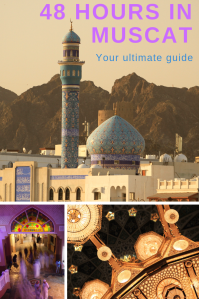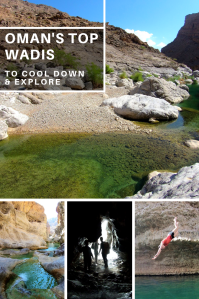Oman is a nation of seafarers and desert dwellers where influences from far away countries mix to the Bedouin hospitality, and the land and the sea prepared with the best spices brought back from centuries of trading are the signature of the local cuisine. Today, with many influences from India, Pakistan and Bangladesh, it can be tough to identify the authentic Omani cuisine: here is a short guide to help you make the most of your culinary discoveries in the sultanate.
The base of Omani food is rice dishes cooked with the available meat, which can be camel or goat in the desert and spices, omnipresent and never overpowering. As such, the shuwa is the classic Omani celebration dish: the marinated meat is roasted in an underground fire pot for over six hours of slow cooking, and served with a rice delicately cooked in a meat broth with spices such as cardamom, cumin and cinnamon.
Mishkaks can easily be found all over the country: smell the barbecue and you will see these skewers of chargrilled lamb, chicken, squid or prawns cooked with Omani spices and sometimes served with a tangy tamarind sauce.
An authentic southern dish, saloonat rubyan is a coconut curry base with Omani prawns. Mashuai are traditional grilled fish dishes best enjoyed anywhere along the coast.
A variety of bread accompanies the dishes: Khobose Rakhal is the traditional Omani paper thin bread (a bit like a very thin crêpe). It is also often found as a snack (and sometimes spelled khubos): egg, cheese or honey are then added on it. Some other breads like the muradhaf, a delicious date bread or the mandazi, a fried sweet bread are a bit less common. In the desert, the traditional Bedouin bread called gursh is baked directly on the embers. Of Indian origin, the parotta (or porotta – a pan fried flat bread) can be easily found especially in local coffee shops serving karak tea (black tea brewed in milk with spices) or kahwa (the traditional Omani coffee flavoured with cardamom, sometimes a few drops of rose water and a pinch of saffron). These coffee shops are often held by Indians, Bangladeshis or Pakistanis and serve quick bites in a very simple decor, as well as delicious fresh fruit juices.
Sweets are quite popular in Oman and the most popular of all, dates apart, is the halwa (the Arabic word for sweet). Prepared by stirring sugar and macerated starch in boiling water, and then adding ghee and flavours such as rose water, saffron, cardamom or Frankincense, it is a gelatinous sweet greatly enjoyed in Oman and all of the Middle East. If halwa used to be prepared by men at home, today it is bought in stores or at the souk, and the most popular store in all of the Middle East is Al Saifa in Nizwa.
Other typical desserts include qashat al-narjeel (crunchy Omani coconut cookies sometimes flavoured with tamarind), mahoo (like a local toffee cookie, very dense, sweet and soft made with condensed milk), or madlouka (sweets made of dates with sesame seeds).
More than a sweet, they are the symbol of the Omani hospitality. Dates are served along with with kahwa, which is never sweetened as the fruit brings the sugariness. Often presented in thermos when travelling, Omanis like serving it in the elegant traditional brass coffee pot with its hinged lid attached to its handle and its curved spout.
Traditionally, after the coffee is served, guests are offered rose water sprinkled over their hands.
If you can find alcohol in Oman, there are so many other options that you may want to try instead. The fresh fruit juices are simply delicious: mango, avocado, guava… or tamarind or hibiscus juices that are very refreshing.
Omani cuisine has not necessarily crossed borders, still it will definitely surprise you as you probably will not be able to read nor pronounce most of the dishes shown on the menu! Omanis will be proud and happy to try and help you make the right choice and discover their local cuisine: feel free to ask and simply enjoy.
Marcella & Claire
Travel tips:
- In Muttrah, the restaurant Bait Al Luban (literally “the House of Frankincense”) is specialized in Omani food and hospitality, the perfect introduction or conclusion to any trip to Oman!
- If visiting a desert camp, we recommend you to go to Nomadic Desert Camp where Omani traditions are respected the most.
- Alcohol can be purchased at the airport and in certain restaurants and bars throughout Oman. Expats need a license to buy alcohol and can spend no more than 10% of their monthly income on alcohol. Be aware that being drunk in public or driving under influence are very heavily punished in the sultanate.
- Check out this interactive map (quick tutorial) for the specific details to help you plan your trip and more articles and photos (zoom out) about the area! Zoom in on the area of interest, and check out the black pins: each of them corresponds to an article.
What to do in Oman:






















I loved reading your article! Thank you for sharing💜
Sweet! Thanks for stopping by 🙂
Absolutely delicious.. The food looks amazing..
It definitely is! I hope you will get to taste some of this food one day. Even now in South Africa we are making our Omani coffee 🙂